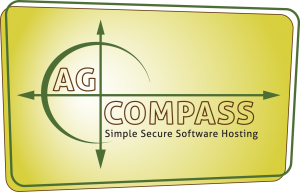Contact Us to learn more about our services.
The Agricultural Innovations To Watch In 2018
 While agriculture is one of the oldest technologies known to man, that hasn’t stopped farm technology from changing every year. From robots to Big Data computer models, new innovations are coming out all the time. As farmers ourselves, we enjoy seeing the latest innovations in agriculture that make life easier, crops healthier, or are just plain cool. Here are a few that caught our attention recently:
While agriculture is one of the oldest technologies known to man, that hasn’t stopped farm technology from changing every year. From robots to Big Data computer models, new innovations are coming out all the time. As farmers ourselves, we enjoy seeing the latest innovations in agriculture that make life easier, crops healthier, or are just plain cool. Here are a few that caught our attention recently:
Using grit for weed control
What do you do with thousands of apricot pits? While some producers sell this byproduct to commercial sand-blasting operations, one researcher recently developed a way to use them back on the farm for weed control. In trials so far, spraying grit in a corn field twice a season led to 80-90% season-long weed control. High operating expenses limit this technology’s commercial application for now, but shifting weed profiles could change that balance. Read more.
Labor automation in strawberry fields
While some commodities have long been harvested by machine, some products have defied mechanization. But with advances in robotics, even strawberries may soon be harvested without human hands. NPR recently profiled a new robotic product that can pick up to 50% of berries off a plant. While success rates still fall short of human labor, continued progress may soon make robotic harvest an option. With agricultural labor trends making it challenging to find, afford, and keep great employees, supplementing human labor may become increasingly necessary for operations.
Goodbye to pitchforks
Several of us at AgCompass grew up on dairy farms – we all have not-so-fond memories of handling feed with pitchforks for hours and hours. This kind of work may be a distant memory in a few years with automatic robotic feeders, like this one from Lely. While pricey, their system frees up labor and provides precise amounts of feed at precise times. Like many robotics, the Lely Vector is currently too expensive for small producers, but with time, products like these will drop in cost and scale, making them more accessible for smaller operations. Goodbye, pitchforks!
Bug vacuum
This idea isn’t one of the newest on our list – but it is one of the wildest! Since the 1990s, several companies have been making large scale bug suctioning devices for in-field use. These devices are especially of interest to organic producers as a novel way to reduce pests. While cost and limited results stalled developed a decade ago, we’re curious if cheaper production and technology-enabled machinery will bring this idea back to the table.
Precision spraying
What if you could teach your sprayer which plants were weeds and which were crops? With the help of advances in computer science, this may be not be so far in the future. Machine learning is a branch of computer science that focuses on writing software and programs that can “learn” from feedback, and adjust their performance. One company applied machine learning to sprayers, building a machine with visual sensors and an advanced computer on board. In 2017, the sprayer was able to achieve the same amount of weed control with 5-6% herbicide application. Read more about it in Farm Industry News.
Powerful software and IT
On a modern farm, some of your most important tools aren’t in your machine shed. Powerful software and a secure IT system for your information enable you to make the best decisions for your business. With in-season production decision-making, quick-changing global markets, and increasingly complicated financials, you need to make sure your data is accessible, protected, and easy to share. Check out our guide to IT solutions for agricultural businesses, including solutions like AgCompass.
Crop modeling and simulation
A powerful IT solution keep your information secure, but it also can support powerful programs, like advanced crop modeling and simulation tools. For generations, unpredictability in weather and pests and nuances of individual properties have kept farmers on their toes, racing to keep up with changes they can’t control in complex environments. With the help of modern modeling and simulation tools, farmers can now experiment with changes in their production without risking their crops. Because these systems are so cutting edge, they’re often produced by universities, including PennState and Washington State University. While no model is 100% reflective of real life, experimenting with nutrient loads, crops, water, and other variables in a model environment can help you explore new ideas for managing your fields.

